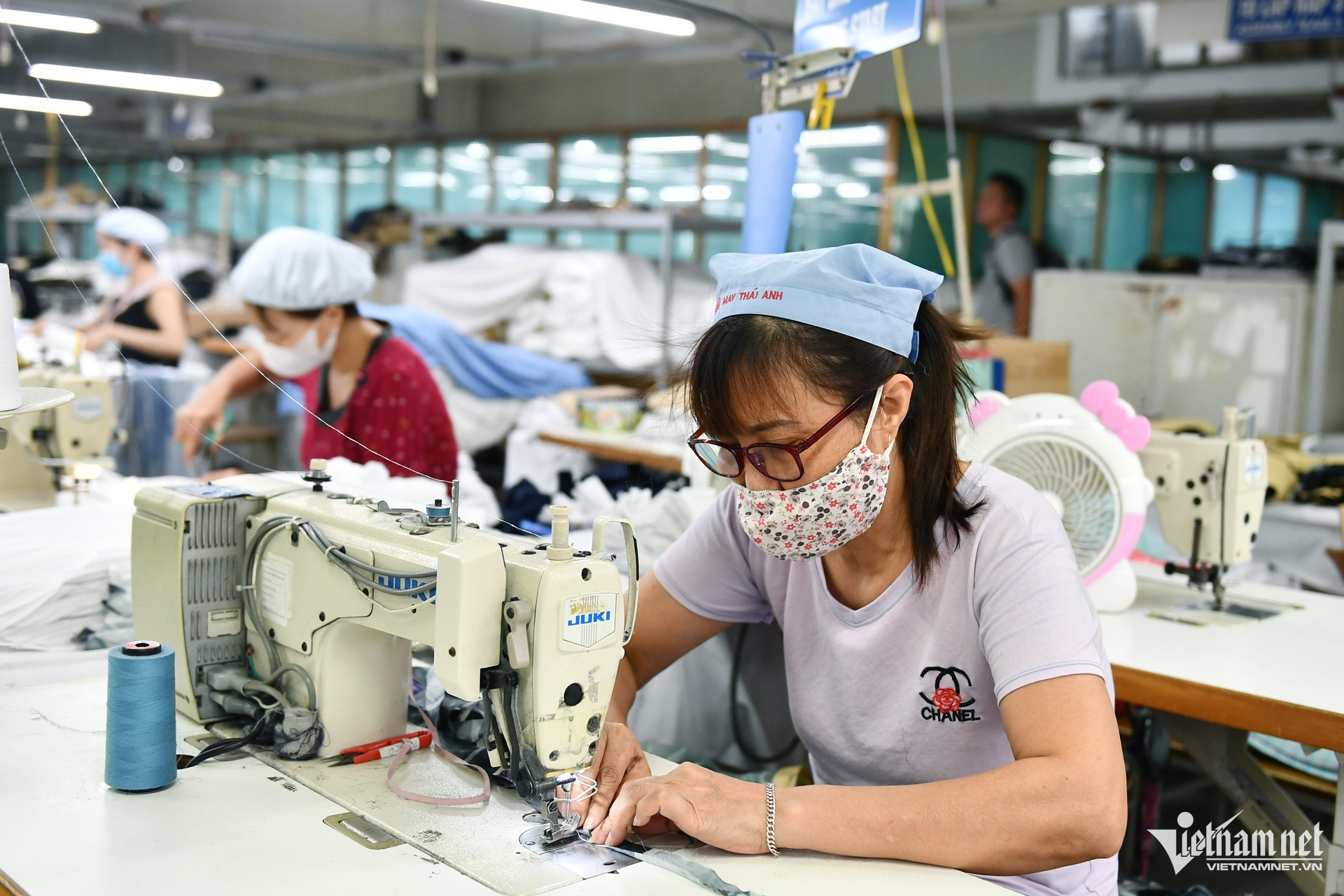
Pham Minh Huan, former Deputy Minister of Labor, Invalids, and Social Affairs and former Chair of the National Wage Council, said that the VGCL’s proposed 9.2 percent regional minimum wage increase is necessary to improve workers’ incomes.
However, the increase must still be based on the actual conditions of businesses, especially because many industries are still struggling to recover from the pandemic and cancelled orders.
Many domestic businesses, especially export-oriented ones in labor-intensive fields like textiles, footwear, and electronics, face pressure from labor costs as a proportion of total product costs.
Meanwhile, orders from major markets like the US and EU are declining, and trade policies remain uncertain, making it difficult for businesses to forecast and plan financially.
“Raising wages is necessary, but if the increase is too high and exceeds businesses’ ability to pay, they may be forced to cut jobs or scale back production. This would undermine the goal of protecting employment,” Huan warned.
Regarding the specific increase, Huan noted that the 9.2 percent proposal was an initial suggestion from the VGCL at the first meeting of the National Wage Council. The council will continue negotiations among three parties—workers, employers, and state representatives—to reach a final consensus.
“In general, parties have a ‘buffer zone,’ so the final increase may settle around 6-7 percent, a reasonable and feasible figure under current conditions,” Huan said.
A steady adjustment roadmap is needed
Huan said that in the current context, it is impossible to delay adjusting the minimum wage any longer. While the cost of living such as electricity, water, gasoline, accommodation and tuition fees have all increased, without timely adjustments, workers’ real incomes will continue to shrink.
The current highest regional minimum wage is around VND5 million, far below the actual cost of living in major cities. If the gap between minimum wages and minimum living standards persists, workers may leave the urban labor market, causing significant losses for businesses, particularly when losing trained and experienced workers.
From a policy perspective, Huan advocated a steady adjustment roadmap to avoid “freezing wages for years and then making sudden increases,” which may disrupt both employers and workers. Ideally, adjustments should occur annually or every 18 months. Predictable increases allow businesses to plan production and workers to stabilize their lives.
According to a labor and wage expert, the proposed minimum wage increase of 9.2 percent is a necessary and well-founded step in the context of the current low income level, not meeting the actual minimum living standards of the majority of workers.
Even though the proposed 9.2 percent increase is approved, it will still be very small compared with the price increases of goods for many years.
He cited recent surveys as showing that the majority of workers only have enough to cover basic expenses, cannot save, and even have to borrow regularly to cover their living expenses.
Meanwhile, the minimum wage, which is considered a "social security floor", does not truly reflect the value of labor and minimum living needs.
The National Wage Council meets every year to advise the government on adjusting minimum wages to ensure workers’ minimum living standards. The most recent adjustment, under Decree No 74/2024, raised regional minimum wages by an average of 6 percent from July 1, 2024. Current rates are: Region 1: VND4.96 million/month; Region 2: VND4.41 million/month; Region 3: VND3.86 million/month; Region 4: VND3.45 million/month.vietnam.vn
Regional minimum wages directly impact the income of workers under labor contracts. Since 2009, the minimum wage has been adjusted 16 times. Over the past decade (2016-2024), minimum wages have risen by an average of 5.96 percent annually, while average wages for salaried workers have increased by 6.57 percent per year.
To implement the 2025 wage adjustments, the Ministry of Home Affairs (formerly the Ministry of Labor, Invalids, and Social Affairs) issued a decision to survey labor and wages in 2024, covering 3,400 enterprises and 6,800 workers across 18 provinces and cities representing Vietnam’s eight economic regions.
The current National Wage Council, chaired by Deputy Minister of Home Affairs Nguyen Manh Khuong, comprises 17 members, including three vice-chairs: Ngo Duy Hieu (VGCL), Hoang Quang Phong (Vietnam Chamber of Commerce and Industry - VCCI), and Dinh Hong Thai (Vietnam Cooperative Alliance). The council includes four representatives from the Ministry of Home Affairs, four from the VGCL, three from employer organizations, and two independent experts in labor, wages, and socio-economic fields.
Vu Diep